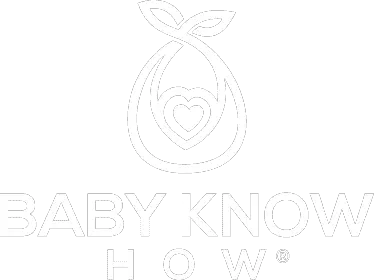Your baby’s doctor will give you the best advice for feeding your baby, but it’s always good for parents to have an idea of why, when, and how to start a baby on solids so they feel prepared for the task. Starting solids is a necessary step in child development and nutrition, but every baby reacts differently to the process.
It’s important to know some general guidelines about starting solid foods with your baby, like signs that show they’re ready and how to make the process as seamless as possible for both of you. Keep reading to learn the fundamentals of starting a baby on solids.
Why is Solid Food Important?
Starting babies on solid food is a natural part of development that helps give them the nutrition they need as they get older. It may also:
- Help babies develop a more tolerant palate for flavors and textures
- Soothe sore gums from teething
- Give growing babies a fuller feeling than breastmilk or formula alone
- Supplement a baby’s diet to ensure that they’re getting the calories and nutrients they need
- Aid in the development of oral and fine motor skills
What Age Should My Baby Start Solids?
The American Academy of Pediatrics (AAP) recommends feeding a baby exclusively with breastmilk or formula for their first six months. Breastmilk and formula tend to give most babies the right number of calories and nutrients they need to thrive during that time. Additionally, earlier introduction of solids could lead to an unhealthy weight gain. Your baby’s pediatrician will discuss any special dietary situations that might affect your baby’s eating habits and the introduction of solids.
How to Start a Baby on Solid Food
1. Consider if Your Baby is Ready for Solids
Although the AAP states that, generally, a baby can start on solids once they turn six months old, that doesn’t always mean your baby will be ready. It’s important to remember that every baby develops differently, and some babies may just not be ready for solid foods until they’re a bit older.
In general, babies are ready to start solids if they:
- Can hold their head up strongly and can sit upright with some support
- Show interest in the foods you eat
- Use their hands to hold and manipulate objects
- Still seem hungry after regular formula or breastmilk feedings
- No longer have the thrust reflex that pushes food out of the mouth
- Have been evaluated by a pediatrician and given the go-ahead to start solids
2. Understand Common Allergy Symptoms
It’s not uncommon for babies to develop allergies or intolerances to certain foods. Soybeans, nuts, cow’s milk, and fish are among the most common foods to trigger allergies.
Knowing what symptoms to look for from allergies to other foods can guide you in feeding your baby and avoiding foods that can cause problems. Vomiting, diarrhea, and rashes are the most common symptoms of an allergy, but if your baby also seems overly lethargic, fussy, or ill within a short time after eating a new food, you should contact your pediatrician.
To closely monitor your baby’s reaction to each new food you introduce, wait about three days before starting a new food. Check your baby’s behavior, skin, and stool color each day. A variety of stool colors is typical, but extremely watery or bloody stool could indicate a digestive tract irritation or a more severe problem and may warrant a call to the pediatrician.
3. 6 Months: Start with Baby Cereal
Baby cereal has an easy-to-swallow texture and bland flavoring that’s palatable for most babies who are just getting introduced to new foods. Rice cereal is a popular option, but there are also oat, barley, and other grain varieties that your baby might like more.
Start by feeding your baby a tablespoon of cereal mixed with water, formula, or breastmilk. Keep it a little runny to help baby swallow it. You can gradually increase the thickness slightly as your baby becomes more capable of swallowing but avoid making it thicker than the instructions suggest for your chosen cereal. You might also start mixing in pureed fruits and vegetables to expose baby to more flavors.
4. 8 Months: Introduce Fruits, Vegetables, and Meats
If your baby enjoys and handles cereal well and seems eager to explore new tastes and textures with her food, then you can offer more variety at mealtime. Fruits and vegetables can give your baby essential nutrients and get them used to stronger flavors than what they’re used to. Meats are an excellent source of iron.
You can use pre-made baby food or make your own at home. Pureed foods might be better for babies who are still averse to chunkier textures, but you can opt for mashing or chunking foods, too. Keep chunked foods smaller than a pea.
5. 10 Months: Graduate to Finger Foods
By 9 or 10 months, your baby will likely be sitting up well on their own, more interested in a variety of foods, and able to manipulate toys and objects with ease. If so, they’re ready for finger foods.
Cooked pasta, crackers, tiny chunks of cheese, small pieces of soft fruit and cooked vegetables, and little pieces of cereal are usually safe for babies to eat at this age. Make sure that the bits of food you feed your baby are small enough for them to grab and hold, and to chew and swallow easily.
Congratulations – your baby is on their way to eating solid foods!










